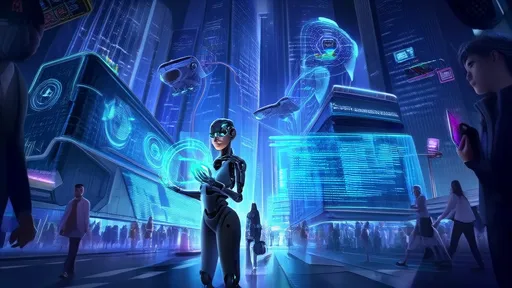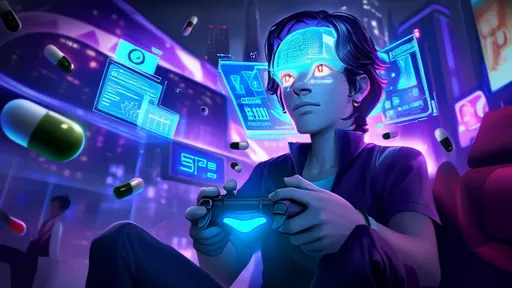The intersection of academic research and corporate interests has never been more pronounced than in the pharmaceutical industry, where the lines between public health priorities and profit motives increasingly blur. What began as a necessary partnership between universities and drug companies to translate basic science into life-saving therapies has evolved into a system where research agendas are increasingly dictated by market potential rather than medical need.
Academic capitalism - the process by which universities and researchers operate in a market-like manner - has transformed the landscape of medical research. The pharmaceutical industry now provides nearly three-quarters of all funding for clinical trials, giving corporations unprecedented influence over what gets studied, how studies are designed, and which results see the light of day. This shift has created what critics call a "distortion of research priorities" that favors blockbuster drugs over genuine medical breakthroughs.
The consequences of this system are far-reaching. Rare diseases affecting small populations often go unstudied because they offer limited profit potential, while "me-too" drugs that provide marginal improvements over existing treatments dominate research pipelines. The opioid crisis provides perhaps the most devastating example of how corporate-influenced research can go wrong, with pharmaceutical companies funding studies that overstated the benefits and underplayed the addiction risks of pain medications.
University research labs that once operated with relative independence now frequently function as extensions of corporate R&D departments. Confidentiality agreements prevent researchers from sharing negative findings about drugs, while publication delays allow companies to control when - or if - unfavorable data reaches the public. The traditional academic values of transparency and intellectual freedom increasingly take a backseat to commercial considerations.
This corporatization of academic research has altered career trajectories in science as well. Young researchers quickly learn that their ability to secure funding and advance their careers depends on aligning their work with industry priorities. The most lucrative career paths now often lead directly to pharmaceutical companies, creating a brain drain from academic institutions and public health agencies.
The financial stakes in this system are enormous. A single blockbuster drug can generate billions in annual revenue, creating powerful incentives to shape research agendas. Pharmaceutical companies routinely pay physicians and researchers as consultants and speakers, further blurring the lines between independent science and marketing. These relationships create conflicts of interest that are often disclosed but rarely mitigated.
Clinical trial design has become particularly susceptible to corporate influence. Studies are frequently structured to maximize the appearance of a drug's effectiveness while minimizing evidence of side effects. Comparator drugs may be given at suboptimal doses, or trials may use surrogate endpoints that don't reflect meaningful clinical outcomes. These practices allow companies to generate favorable data even for medications that offer little real-world benefit.
The publication bias in pharmaceutical research represents another serious problem. Positive results are far more likely to be published than negative findings, creating a distorted evidence base that overestimates drug efficacy. Medical journals, many of which rely heavily on pharmaceutical advertising revenue, have been slow to address this issue despite its well-documented impact on patient care.
Patent protection timelines further distort research priorities. The race to develop new formulations of existing drugs - often with minor molecular tweaks that offer no therapeutic advantage - frequently takes precedence over genuine innovation because it allows companies to extend their monopolies on lucrative medications. This "evergreening" strategy keeps drug prices high while doing little to advance medical science.
Public universities face particular challenges in this environment. As state funding for higher education has declined, these institutions have become increasingly dependent on corporate partnerships. While industry collaborations provide much-needed resources, they often come with strings attached that compromise academic freedom. Many universities now have technology transfer offices that function more like corporate dealmakers than protectors of academic integrity.
The impact on patient care has been significant. Physicians relying on industry-influenced research may prescribe expensive new drugs when older, equally effective alternatives are available. Formulary committees at hospitals and insurers often make coverage decisions based on studies designed to emphasize a drug's benefits. The result is a healthcare system that spends enormous sums on medications that may not represent meaningful advances.
Regulatory agencies struggle to maintain independence in this environment. The pharmaceutical industry funds a significant portion of the FDA's drug approval process through user fees, creating what some describe as a client-patron relationship. While regulators maintain they can remain impartial, the revolving door between agencies and industry raises legitimate concerns about regulatory capture.
Some academic institutions have begun pushing back against these trends. A handful of medical schools now prohibit pharmaceutical representatives from campus and refuse industry-funded continuing medical education. A few universities have established independent research centers funded by foundations or government grants to study drugs and diseases that don't attract corporate interest. These efforts remain the exception rather than the rule.
The COVID-19 pandemic brought both the promise and perils of academic-industry collaborations into sharp relief. While unprecedented cooperation between researchers and pharmaceutical companies yielded remarkably effective vaccines in record time, the crisis also revealed how ill-prepared the system was to address global health needs without the profit motive. Vaccine inequity between rich and poor nations demonstrated the limitations of relying on corporate priorities to drive medical innovation.
Alternative funding models for medical research have shown some promise. Non-profit drug development initiatives, government-sponsored research consortia, and public-private partnerships with strict safeguards against corporate influence offer potential paths forward. These models typically prioritize unmet medical needs over market potential, though they often struggle with funding limitations compared to industry-backed research.
The growing field of open science represents another potential counterbalance to corporate influence. Platforms that require pre-registration of clinical trials and make all research data publicly available help reduce publication bias and manipulation of results. Some medical journals have adopted more stringent conflict-of-interest policies, though enforcement remains inconsistent across publications.
Patients and advocacy groups are increasingly demanding change as well. Organizations representing people with rare diseases have pushed for legislation requiring pharmaceutical companies to study treatments for conditions that may not be commercially viable. Other groups have called for reforms to the patent system that would discourage evergreening while still rewarding genuine innovation.
Ultimately, the solution will likely require a rebalancing of the relationship between academic research and corporate interests rather than a complete separation. Pharmaceutical companies play a crucial role in drug development and bring valuable resources to the table. But the current system, where corporate priorities dominate research agendas, serves neither science nor public health particularly well.
As medical research becomes increasingly complex and expensive, the need for clear ethical boundaries and safeguards grows more urgent. Preserving the integrity of academic science while still facilitating the development of new treatments represents one of the most significant challenges facing medicine today. Without meaningful reforms, the promise of academic research to serve the public good will continue to be compromised by commercial interests.

By /Jul 2, 2025

By /Jul 2, 2025

By /Jul 2, 2025

By /Jul 2, 2025

By /Jul 2, 2025

By /Jul 2, 2025

By /Jul 2, 2025

By /Jul 2, 2025

By /Jul 2, 2025

By /Jul 2, 2025

By /Jul 2, 2025

By /Jul 2, 2025

By /Jul 2, 2025

By /Jul 2, 2025

By /Jul 2, 2025

By /Jul 2, 2025

By /Jul 2, 2025

By /Jul 2, 2025

By /Jul 2, 2025

By /Jul 2, 2025